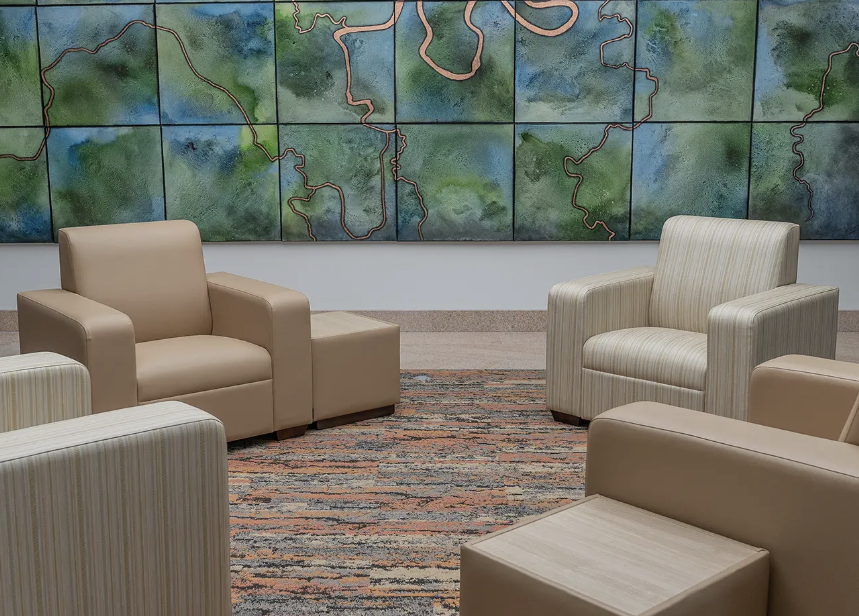Built for Safety: Australia’s Anti-Ligature Furniture, Engineered for Real-World Wards
15 October 2025, 10:20 PM

There is a lot more to ensuring safety in healthcare settings than just providing good supervision. It also comes down to the layout of the building, and, perhaps more surprisingly, the furniture used.
You might not realise it, but in hospitals, mental health wards, and care facilities, something as simple as a chair or a shelf can pose unexpected risks. In particular, if it hasn’t been designed with care. That’s why anti-ligature furniture has become such an important part of modern healthcare design.
While it still needs to be practical, durable, and comfortable, this type of furniture is specifically engineered to reduce the risk of harm. Typically, it blends smart design with safety features that not only better protect patients, but also give staff greater peace of mind.
Just like a well-built pergola can transform an outdoor area into a safe and functional space, so can anti-ligature furniture reshape healthcare environments to make them more supportive and secure.
In this post, we’ll throw the spotlight on anti-ligature furniture in healthcare settings and highlight some of the parallels they have with pergolas.
Why Safety is Important in Healthcare Environments
In any healthcare setting, people should feel and be safe. Yet for many in vulnerable situations, even everyday objects can pose significant risks.
For instance, a chair, a door handle, or a wardrobe fitting may become dangerous if it has not been thoughtfully designed. That’s why ligature-resistant furniture has become essential in modern facilities.
At the core of ligature-resistant furniture is the desire to reduce risk and save lives. That is exactly why an Australian mental health furniture manufacturer will engineer products with smooth edges, concealed joints, and tamper-proof fixings. By doing this, they ensure the environment supports recovery and does not harm it.
The same thinking is applied in broader construction, too. Just as ventilation design can affect comfort and safety in homes and pergolas, hospitals and wards must rely on smart design choices that protect people at all times.
What Is Anti-Ligature Furniture?
For those who aren’t familiar with it, anti-ligature furniture is a type of furniture that is specifically built to remove opportunities for self-harm. The term “ligature” refers to points that can be used to tie or attach something. They are more common than you might think because in a hospital, a simple protruding handle could easily become a ligature point.
This is where anti-ligature design is important because it eliminates or reduces these risks. In doing so, they become suicide prevention furniture that makes people a lot safer.
Key Features of Ligature-Resistant Furniture
In the design of ligature-resistant furniture, every element is carefully considered to prevent risk. For instance, instead of sharp edges, you’ll find smooth curves and rounded corners that make the furniture safer in high-pressure environments. These subtle changes can significantly reduce the potential for self-harm.
Another important feature is the use of tamper-proof fixings. Screws and joints are built so they cannot be removed or loosened, which ensures the furniture stays intact even under stress. This is vital in secure healthcare environments where pieces need to be built to withstand daily use and resist damage.
In addition, fittings such as shelves, rails, and handles are designed with anti-ligature principles in mind. As they eliminate potential points for harm, they give staff and families confidence that patients will remain safe.
Applications in Real-World Wards
As anti-ligature furniture is designed with flexibility in mind, it is suitable for a wide range of healthcare environments.
For example, in mental health facilities, as they cannot be tampered with or misused, they go a long way towards reducing risks for patients who may be experiencing severe distress. Similarly, correctional facilities also rely on ligature-resistant furniture to maintain order and reduce opportunities for self-harm or acts of violence. In these high-risk settings, strength and security are essential. Therefore, every fixture must meet strict standards to protect both staff and inmates.
Elsewhere, in aged care centres, the focus is often more on preventing falls. This helps to create an environment where residents feel both comfortable and secure. Hospitals and general clinics can also benefit because in busy wards, staff must concentrate on patient care without distraction. Therefore, safe furniture can help to maintain their focus by removing avoidable hazards.
Affordable Pergolas and Safe Furniture Solutions
At first glance, pergolas and hospital furniture might seem worlds apart. But the principle is the same. Whether you’re building a pergola for your backyard or fitting out a healthcare ward, smart design protects the people who use the space.
Affordable Pergolas has always focused on safe, functional design. From weather-resistant materials to thoughtful layouts, our builds are made to last. The same approach applies to healthcare furniture, where durability, practicality, and safety are paramount.
It shows that no matter the environment, the right design choices make all the difference.

